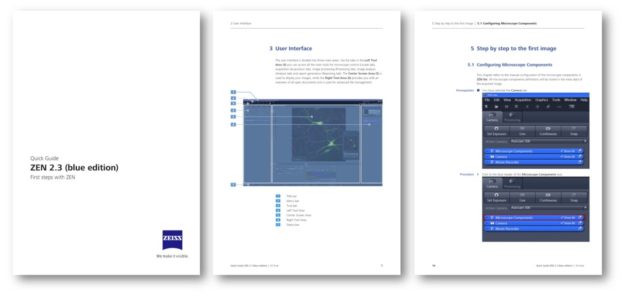R&D 100 recognition as disruptive market technology latest in a series of awards
ZEISS Airyscan has been selected by the expert judges and editors of R&D Magazine as a recipient of a R&D 100 Special Recognition Award. The ZEISS exclusive detection technology for confocal laser scanning microscopes (LSM) is regarded as one of only 3 most significant market disruptor products introduced in the past year.

A traditional confocal microscope scans the sample by illuminating one spot at a time to detect the emitted fluorescence signal. Out-of-focus emission light is rejected at a pinhole. Users can increase image resolution by making the pinhole smaller, but the collected signal drops significantly, since less valuable emission light is passing through.
With ZEISS Airyscan, ZEISS introduced a revolutionary new detector concept. ZEISS Airyscan is a 32 element area detector. Each detector element functions as a single, very small pinhole, yet the overall assembly covers the area of a large pinhole. Knowing the spatial distribution of each of the 32 detectors results in improved resolution and signal-to-noise. The Airyscan detector is available for ZEISS LSM 8 microscope systems and as an upgrade for ZEISS LSM 710 and ZEISS LSM 780 confocal microscopes.

“With the Airyscan detector ZEISS dramatically raises the performance level of confocal microscopes and pushes the limits when working with light sensitive samples” says Dr. Bernhard Zimmermann, Head of Life Sciences at ZEISS Microscopy business group. “We are particularly proud to be recognized for disrupting the traditional confocal market with our LSM 8 product family, since ZEISS always strives to provide truly innovative solutions for this important and widely used research technology.”
The annual R&D 100 Awards celebrate the year’s top technology products in the fields of new materials, chemical research, biomedical products and high-energy physics. The winners come from the areas of industry, science, private research institutes and government laboratories. Since 2002, ZEISS has consistently received one of the renowned awards every year, most recently for the light-sheet fluorescence microscope system ZEISS Lightsheet Z.1 and 3D superresolution microscopy with ZEISS ELYRA PS.1.
Go to the official press release
Behind-the-scenes: Developing the Airyscan detector, courtesy of the Foundation for Innovation and Research in Thuringia, STIFT (available in German language only)
The R&D 100 Special Recognition Award is the latest in a series of awards for the ZEISS LSM 8 family of confocal microscopes with the ZEISS-exclusive Airyscan detector. So far, ZEISS received the prestigious people’s choice awards Select Science Scientists’ Choice and two consecutive #MyNeuroVote honours at Neuroscience 2014 and 2015 for ZEISS LSM 880 with Airyscan. Most recently, ZEISS has been awarded the Innovation Prize of the State of Thuringia for the development of the Airyscan detector.

The post ZEISS LSM 8 Family with Airyscan: Showered with Awards appeared first on Microscopy News Blog.












































